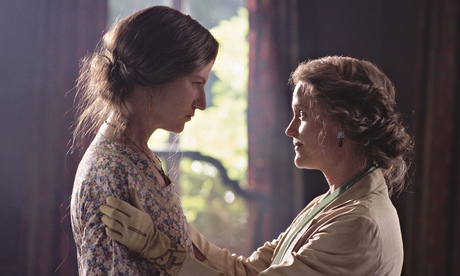
In this impressive novel, everyone is afraid of Virginia Woolf, particularly her elder sister, the artist Vanessa Bell, who has assumed a maternal responsibility for her troubled, brilliant sibling after the death of their parents.
In the reams of biography, memoir and fiction generated by the Bloomsbury group, Vanessa has remained elusive; perhaps because her legacy is visual rather than literary, and perhaps because she never acquired the mythos that grew up around Virginia as a tragic genius. By means of an invented diary based on Vanessa’s extensive correspondence and the memoirs of those who knew her, Priya Parmar places her centre stage and seeks to explore the inner landscape of a woman who – in this version, at least – was a steadying influence on this collection of brilliant and volatile young intellectuals.
When the novel begins in 1905 both Vanessa and Virginia are still the Miss Stephens. After the death of their father they have moved with their two brothers, Thoby and Adrian, from genteel Kensington to the “bohemian hinterland” of Bloomsbury, where they further scandalise polite society by hosting gatherings at which mixed groups of unchaperoned young people drink and argue about art and literature until the early hours. Regular guests are mainly Thoby’s friends from Cambridge, among them Lytton Strachey, Morgan Forster, Maynard Keynes, Clive Bell. In a nod to Woolf’s Mrs Dalloway, the novel opens with preparations a party; Vanessa, though caught up in the thrill of throwing off social convention, clearly struggles with the need to balance their budding freedom with her sense of responsibility in a way that her more feckless younger siblings do not: “Neither Thoby, nor Adrian, nor Virginia, would ever think of anything so banal as sandwiches, or napkins, or teaspoons.” It is Vanessa who does the household accounts, frets about the catering and soothes the dangerous mood swings of her sister, whose knife-edge mental state holds the family in thrall. There are references to a severe breakdown the previous year; the threat of a repeat casts a long shadow over their lives and explains Vanessa’s martyr-like willingness to accommodate Virginia’s childish sulks and demands, which often appear as monstrous selfishness. “She is driven by the need to footprint, to own, to possess,” Vanessa confides.
Nowhere is this more apparent than in the story that forms the heart of this novel: that of the affair between Virginia and Vanessa’s husband, the art critic Clive Bell. Parmar explains in her author’s note that Vanessa never made reference to the relationship, which was almost certainly unconsummated, but that Virginia wrote of it, “my affair with Clive and Nessa turned more of a knife in me than anything else has ever done”.
Parmar follows the trajectory of this emotional betrayal with sharp insight and careful attention to detail. She allows the reader to fully inhabit Vanessa’s doubts about Clive’s courtship, the gradual softening of her resistance and the euphoria of her early marriage and discovery of sex, cut short by her pregnancy and the arrival of a son who makes Clive feel ousted. Her portrait of Virginia is equally subtle; the desire to be the sole object of her sister’s attention, which appears so often as spoilt and selfish, is glimpsed as a terror of being left alone with her treacherously uncertain mind.
Complementing Vanessa’s fictional diary are letters, telegrams and postcards between other members of the Bloomsbury set, most notably Lytton Strachey and his friend Leonard Woolf, who remains offstage for most of the novel, working for the civil service in Ceylon. These are reproduced as facsimiles of the original designs, which make the pages more visually textured, though some are more successful than others. Virginia seems less substantial in Parmar’s attempts to recreate her voice directly in letters than when seen through Vanessa’s eyes.
This hardly detracts from the fact that Vanessa and Her Sister is a remarkable achievement, all the more so for being only Parmar’s second novel. She has had the blessing of Vanessa Bell’s granddaughter and daughter-in-law, and her research has clearly been meticulous. But it’s the central portrait of Vanessa’s emotional life and her journey to a more disillusioned, if pragmatic, self-knowledge, that makes this novel, with its familiar setting, so fresh and compelling.
Vanessa and Her Sister is published by Bloomsbury Circus, £9.99. Click here to buy it for £10.39

